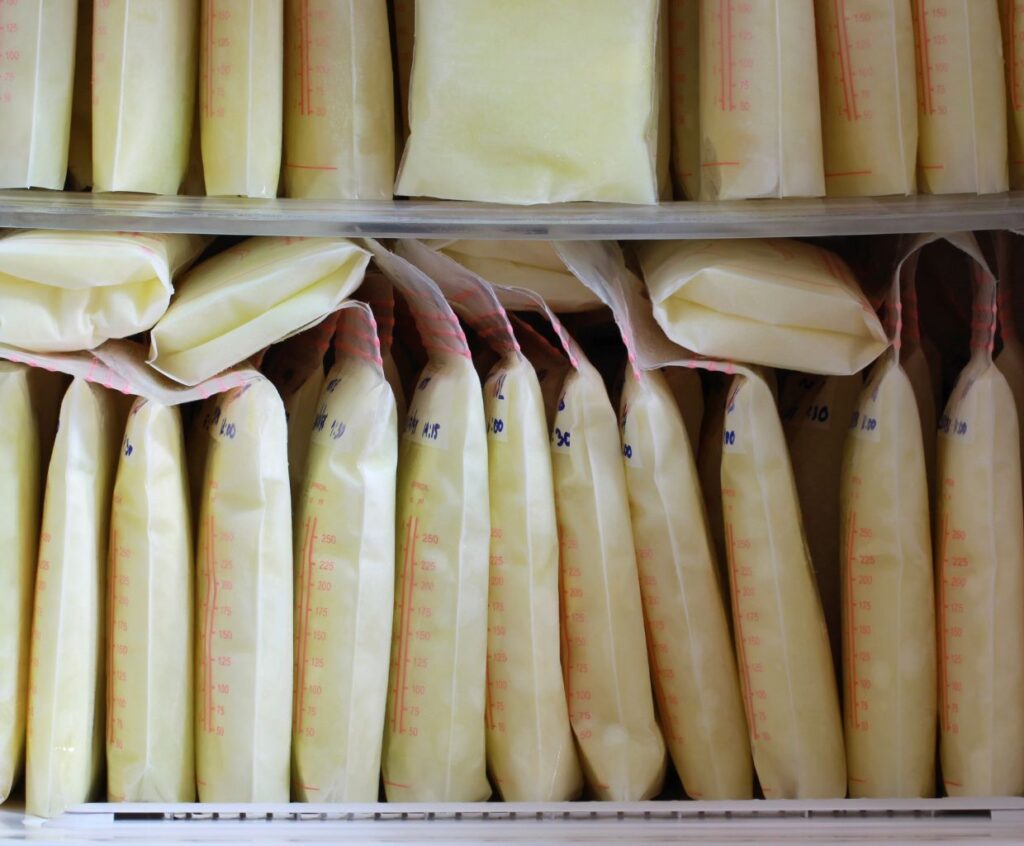Freezer Stash Breast Milk: How Much is Ideal and Tips for Building a Sizable Supply
Breast milk is a precious resource that provides optimal nutrition and numerous health benefits to newborns. As a nursing mother, having a freezer stash of breast milk can be incredibly helpful, whether you’re returning to work, planning a night out, or want to have some extra milk stored for emergencies.
But how much breast milk should you aim to have in your freezer stash, and what are some practical ways to build a sizable supply? In this article, we will explore these questions and provide valuable tips.
How Much Freezer Stash Breast Milk is Ideal?
The ideal amount of breast milk in your freezer stash can vary depending on your circumstances. However, a good rule of thumb is to aim for at least a two-week supply. This means having enough milk to feed your baby exclusively for two weeks if necessary.
Having a substantial stash ensures that your baby will not miss out on the benefits of breast milk, even if you encounter any unexpected challenges or interruptions in your breastfeeding journey.
Tips for Building a Sizable Supply
Building a sizable freezer stash requires dedication and some planning. Here are a few tips to help you maximize your milk production and store an ample supply:
-
- Pump after breastfeeding: Consider pumping for a few minutes after each nursing session to stimulate additional milk production. This extra pumping session can help increase your milk supply over time.
-
- Power pumping: Power pumping involves short periods with short breaks in between. This method can help boost your milk supply by mimicking cluster feeding, which signals your body to produce more milk.
-
- Establish a pumping routine: Set a regular pumping schedule, ideally around the same time every day, to help your body adjust and produce more milk at those times. Consistency is critical to building a sizable supply.
-
- Stay hydrated and well-nourished: Drink plenty of water and eat a balanced diet to support your overall milk production. Add lactation-boosting foods like oatmeal, fenugreek, and fennel to your diet.
-
- Use a high-quality breast pump: Invest in a reliable and efficient breast pump that suits your needs. A good pump can significantly enhance your pumping sessions and help you express more milk in less time.
-
- Properly store your breast milk: Ensure you use clean and sterilized storage containers or breast milk bags. Label each container with the date and time of expression to maintain a proper rotation system.
-
- Create a freezing and thawing system: Arrange your stored milk systematically, with the oldest milk in the front so you can use it first. Thaw frozen milk in the refrigerator overnight or using a warm water bath.
Remember, each mother’s milk supply is unique, so don’t be discouraged if your stash doesn’t grow as quickly as you’d like. With patience, persistence, and these helpful tips, you can gradually build a sizable freezer stash of breast milk that will provide you and your baby with peace of mind and flexibility.
How much breast milk should be stored in a freezer stash for optimal convenience and peace of mind?
The amount of breast milk stored in a freezer stash can vary depending on individual needs and preferences. However, a general guideline is storing around 1-2 weeks’ worth of breast milk in the freezer.
This allows for flexibility in emergencies, illness, or any other situations where breastfeeding may not be possible or convenient. Storing this amount of milk can provide peace of mind for mothers, knowing that a backup supply is available when needed.
Are there any specific storage guidelines or techniques that can help maximize the longevity of frozen breast milk in a freezer stash?
Some specific guidelines and techniques can help maximize frozen breast milk’s longevity in a freezer stash. Here are some tips:
1. Use proper storage containers: Use breast milk storage bags or containers specifically designed for storing breast milk. Please ensure they are BPA-free and have airtight seals to prevent leakage and freezer burn.
2. Label and date: Always label each storage container with the date it was expressed. This helps you keep track of the milk’s freshness and ensures you use the oldest milk first.
3. Store in small quantities: It is better to store breast milk in smaller quantities, such as 2 to 4 ounces, as it allows easier thawing and minimizes wastage.
4. Fill containers correctly: Leave some space at the top to allow for expansion when the milk freezes. This prevents the bag or container from bursting.
5. Use the back of the freezer: Store the breast milk in the coldest part of the freezer, typically the back. Avoid storing it in the freezer door as it is subject to temperature fluctuations when opened.
6. Maintain a constant temperature: Keep the freezer at or below 0°F (-18°C) to ensure the milk stays frozen and maintains its quality.
7. Avoid frequent temperature changes: Limit the number of times you open the freezer to maintain a consistent temperature. Frequent temperature changes can affect the quality of the breast milk.
8. Follow the “first in, first out” rule: Arrange the breast milk containers so that the oldest milk is in the front and the newest is in the back. This way, you will use the oldest milk first, ensuring none goes to waste.
9. Avoid overstocking: Avoid keeping too much breast milk in the freezer stash. Aim to maintain a manageable quantity that can be used within a reasonable time frame (around 3-6 months) to ensure freshness.
10. Thaw and use properly: When you need frozen breast milk, thaw it in the refrigerator overnight or run it under warm water. Avoid microwaving or heating it directly on the stove, as this can destroy some of the milk’s valuable nutrients.
By following these guidelines and techniques, you can maximize the longevity of your frozen breast milk in a freezer stash and ensure that it remains safe and healthy for your baby.


